The Economics and Statistics Division maintains archives of previous publications for accountability purposes, but makes no updates to keep these documents current with the latest data revisions from Statistics Canada. As a result, information in older documents may not be accurate. Please exercise caution when referring to older documents. For the latest information and historical data, please contact the individual listed to the right.
<--- Return to Archive
For additional information relating to this article, please contact:
October 12, 2023CANADIAN HOUSING STATISTICS PROGRAM, 2022 Statistics Canada released new data today from the Canadian Housing Statistics Program (CHSP) for the 2022 reference year. Today's release includes updated information on the residential property stock and assessment values by property type. These preliminary data for the 2022 reference year are available at the Census metropolitan area (CMA) and the census agglomeration (CA) levels, and at the provincial level for Nova Scotia, New Brunswick, Ontario and British Columbia.
The Canadian Housing Statistics Program (CHSP) provides information on the residential property stock, defined as all residential properties in a given geographic region, excluding vacant land. Residential properties include all land and structures intended for private dwelling purposes. A residential property may consist of one dwelling, as is common for single-detached housing, or multiple dwellings such as apartment buildings or row housing.
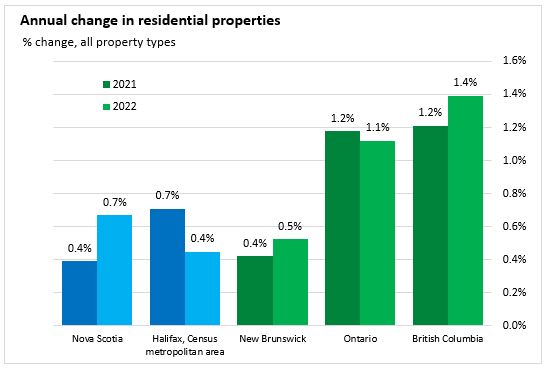
There were 449,715 residential properties in Nova Scotia in 2022, an increase of 0.7% over 2021. The number of residential properties within the Halifax census metropolitan area increased 0.4% to 146,340. New Brunswick had slower residential property growth in 2022, while Ontario and British Columbia saw faster growth compared to Nova Scotia (data for other provinces are not available).
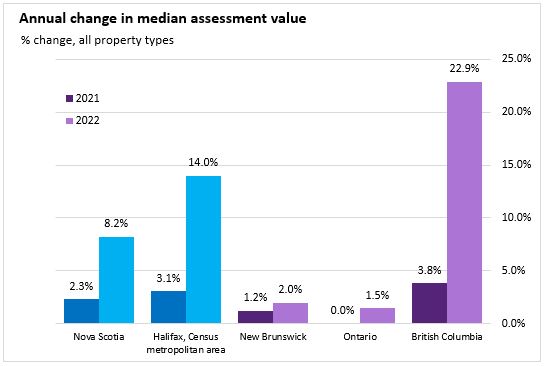
The median assessment value across all residential properties in Nova Scotia was $145,000 in 2022, an increase of 8.2% over 2021. Within the Halifax census metropolitan area median assessment values rose 14.0% to $269,000. The increase in median assessment value for 2022 was relatively slower in New Brunswick and Ontario, while British Columbia had faster growth compared to Nova Scotia (data for other provinces are not available).
Within Nova Scotia the fastest growth in number of residential properties occurred outside CMAs and CAs (+1.0%), and for Kentville and Truro area both at +0.7% for 2022. Single-detached housing accounted for 298,575 (66%) of all Nova Scotia residential properties in 2022, up 0.5% from 2021. The fastest growth in single-detached housing was in Halifax (+0.6%), while the New Glasgow area saw a slight decline in number of single-detached houses.


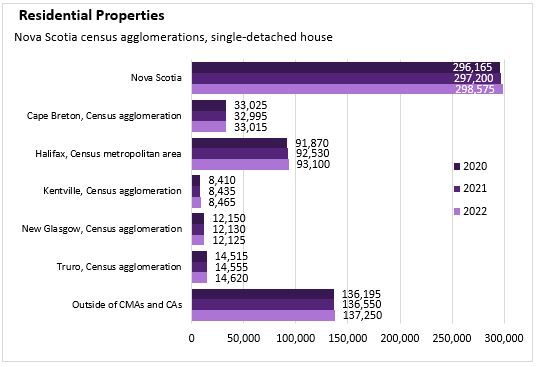
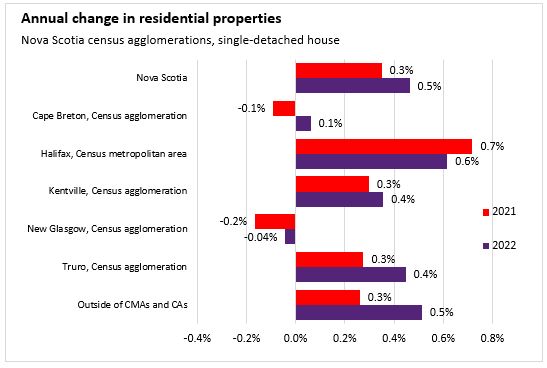
The median assessed value of residential property in Nova Scotia was $145,000 in 2022, up 8.2% from $134,000 in 2021. Across the province, the highest median assessment values were in Halifax ($269,000), up 14.0% from 2021. The lowest median assessments were in Cape Breton ($82,800), with median assessments up 6.3% from 2021.
The median assessed value of single-detached housing in Nova Scotia was $171,000 in 2022, up 8.2% from $158,000 in 2021. For 2022, median assessed values for single-detached housing were highest in Halifax at $296,000 (+13.8%), followed by Kenville at $176,000 (+8.6%) and Truro at $148,000 (+6.5%). The lowest median assessments for single-detached housing were in Cape Breton at $113,000 (+6.6%).
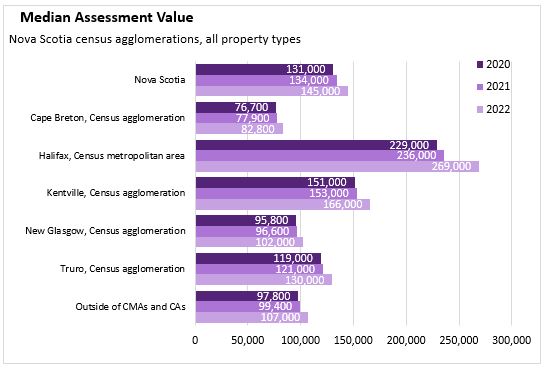
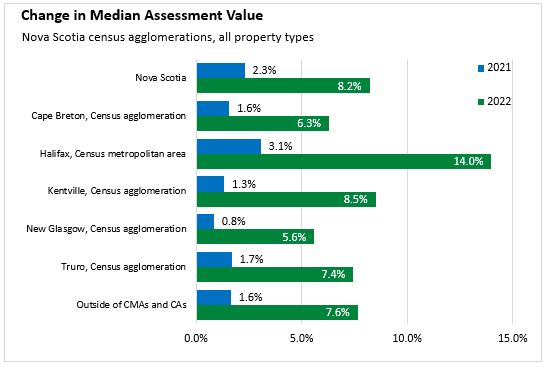
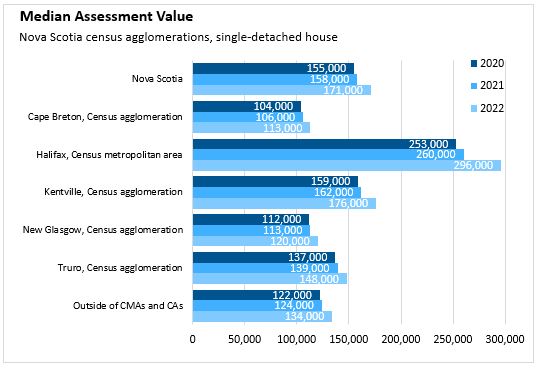

Source: Statistics Canada, Canadian Housing Statistics Program, 2022
<--- Return to Archive